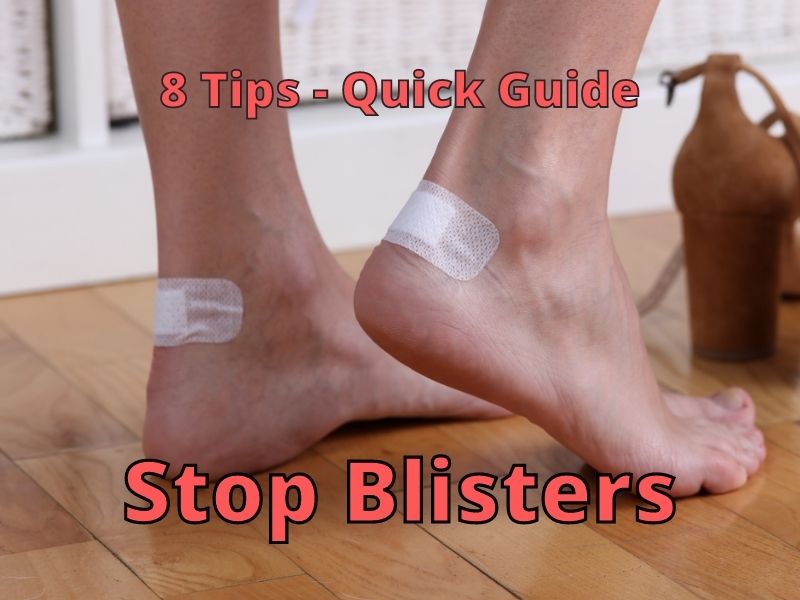Most of us love hiking – whether it’s a casual day hike around the local nature reserve or a multi-day epic journey across varying terrains and landscapes. Even if everything is great sometimes we get blisters. So how do we stop them before they start?
Preparation, before you hike, can save your feet from blisters by giving you the protection you need. Here’s a quick guide to blister prevention:
QUICK GUIDE
- Wear Quality Hiking boots or Shoes – Use semi-rigid comfortable boots or shoes that support your foot.
- Wear Hiking Socks – Get socks made for hiking and use sock liners.
- Lace Your Boots Properly – Your feet should feel snug, not tight, cramped, or squished.
- Air Your Feet – Whenever needed take your boots off and let them and your socks breathe.
- Use Athletic Tape – Tape areas you know will rub and areas that start to feel sensitive.
- Avoid Water – Use waterproof shoes when there’s little water and trail runners or water shoes when there are lots.
- Use Quality Insoles – Some insoles provide support and grip better slip resistance.
- Clean Out Your Boots – If rocks, sand, or dirt get in your boots, clean them out right away.
Regardless of your experience, a blister in the wrong place can turn a three-day adventure into a five-day punishment and is guaranteed to put you off your next potential venture. Although a correct selection of your footwear plays a crucial role in this, knowing what to do should you get one is even more crucial.
So, if you want your next trip to be blister-free, take note of the tips below.
What Causes Hiking Blisters?
Blisters come from repeated friction that eventually damages the skin. It’s usually caused when the skin rubs against something repeatedly, but it can also be caused by exposure to extreme temperatures, or even contact with harmful substances, such as hazardous chemicals.
When it comes to hiking, most people get blisters as a result of their shoes or boots repeatedly rubbing against their skin, and eventually causing irritation and damage.
This can occur from shoes being too loose or too tight, or just shoes that don’t correctly match the size or shape of your feet. Feet that are sweaty or hot are also more likely to get blisters, as this adds to the irritation.
To prevent your feet from getting blisters in the first place, it’s up to you to take action. Here are eight key things you can do before, during, and after hiking on a trail to help prevent this:
8 Tips To Prevent Blisters When Hiking
1. Wear Quality Hiking Boots or Shoes
AD
As mentioned below, although socks do make a huge impact when it comes to blisters, nothing makes more of a difference than your hiking shoes or boots themselves.
Hiking boots don’t come cheap, especially high-quality pairs, but most experienced hikers know that spending the extra cash or spending the extra time to find a pair that fits, is always worth it.
The boots should feel comfortable and supportive the first time you wear them. There shouldn’t be a break-in period for the soles and cushion of the boot, although shoes will tend to relax as time goes on.
Boots that are too tight will apply pressure and therefore increase friction when walking. Boots that are too loose will allow your feet to move too much and cause friction that way as well. Snug boots are best.
Usually, you want a semi-rigid sole that can take a lot of weight and walking mile after mile. Soles that are too hard or too soft may become very uncomfortable quickly.
Although the blisters formed in these instances aren’t always the same, both will result in an uncomfortable experience. But, like with finding the right socks, it’s not just about size and fit, but also about moisture and breathability.
Bad hiking boots or shoes, just like bad hiking socks, will allow your feet to get too wet, and therefore result in more friction and irritation.
In short, if there’s one decision you want to get right, it’s finding the right hiking boots or shoes – in size, in fit, and material.
So, take your time to shop around, and if a model is slightly out of budget, it may be worth picking up anyway.
2. Wear Hiking Socks
AD
It isn’t only your shoes or boots that make a difference when it comes to blisters, but having the right socks – both right for the trail, and right for you in particular – can also have a huge impact.
Wearing a pair of socks with moisture-wicking properties, like wool socks, will help keep both your feet and your shoes dry. Many hiking socks are a wool blend.
Wet fabric tends to cause more friction, and more friction is more likely to cause blisters. So, keeping these dry will be a big help.
To reduce irritation, it’s definitely worth spending a few extra dollars for a decent pair of hiking socks. Don’t forget sock liners as well.
Sock liners are thinner socks that you wear under your hiking socks to add a protective wall between your foot and your hiking sock. That way your hiking sock never rubs your foot, just the sock liner.
Look for wool or a high-quality synthetic blend, as these will keep your feet dry. Merino wool especially is a great choice, though don’t expect a pair of these to come cheap.
3. Lace Your Boots Properly
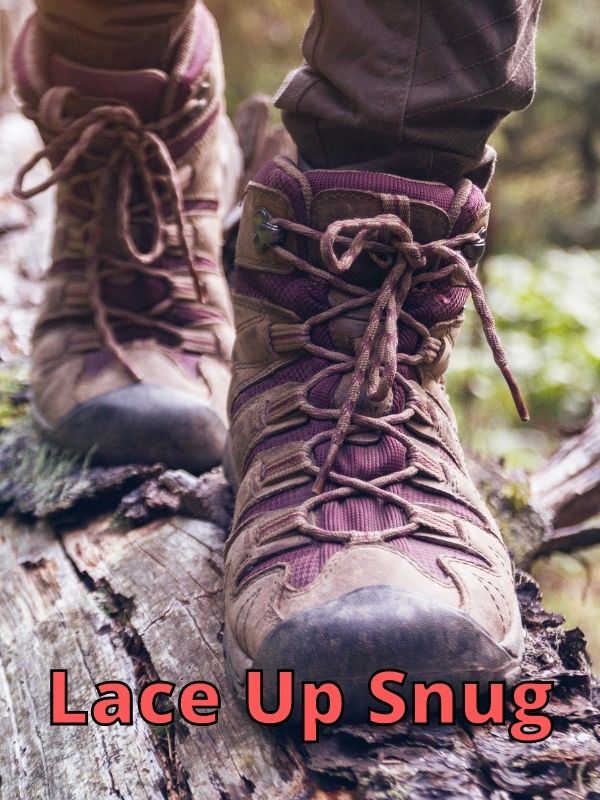
Now that you’ve got the right socks, the next step is to make sure that whatever footwear you have, is fitted properly, for both added comfort and reduced irritation.
When fitting boots or shoes many make the mistake of lacing them up as tight as possible to reduce any movement between your foot and your shoe.
Lacing them too tight not only restricts blood flow to your feet but may increase friction. Since your shoe is so tight, it’s pressing up against the skin with more force. Every time you walk, any sort of flexing of the shoe can transfer to your skin and cause rubbing, even if your foot is secure.
Also, if your toes are too squished, they will start to rub against each other and cause blisters or raw skin.
Everyone’s feet are different, so it’s unlikely that a pair of shoes or boots will fit both your ankles and feet perfectly. Aim to have them fitted fairly snug, making them comfortable, but not too tight that they squeeze your feet.
Tightening them around the forefoot is best, as this reduces unwanted movement, and holds your feet firmly in place without causing damage. If you feel the need to tighten your boots really tightly, they’re probably not a good fit, to begin with.
All hiking shoes and boots are made differently, so just because your last pair needed tightening in some areas, doesn’t mean your current pair will want to be laced in exactly the same way.
4. Air Your Feet
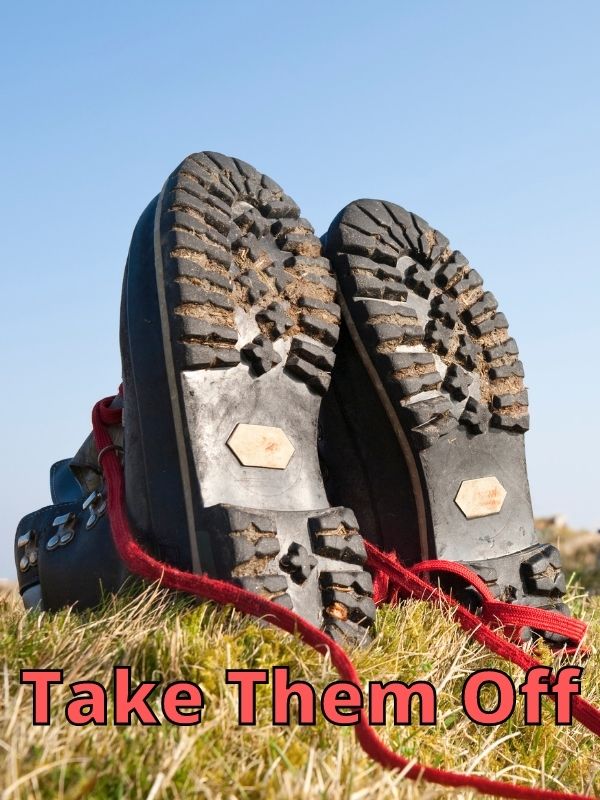
If you’re starting to feel the moisture in your feet, and some of the methods above haven’t quite done enough, consider hitting the ‘reset’ button and airing everything out completely.
Whether you’ve stopped for a water break, are waiting for the rest of the pack to catch up, or just need to have a rest, take your shoes and your socks off to let your feet completely air out.
Laying your socks and shoes out will help them dry too. If you can use a fireplace your shoes and sock on a stone near the fire to help them dry out quicker. For those who get particularly wet feet, bringing an extra pair of socks is a good idea, so you can swap them out halfway through the trail.
If it’s a sunny day, bringing a pair of hiking sandals or water shoes to wear for half an hour can help too. It gives your feet a break, but also lets your socks and shoes dry, making them more comfortable when you put them back on.
5. Use Athletic Tape On Sensitive Areas
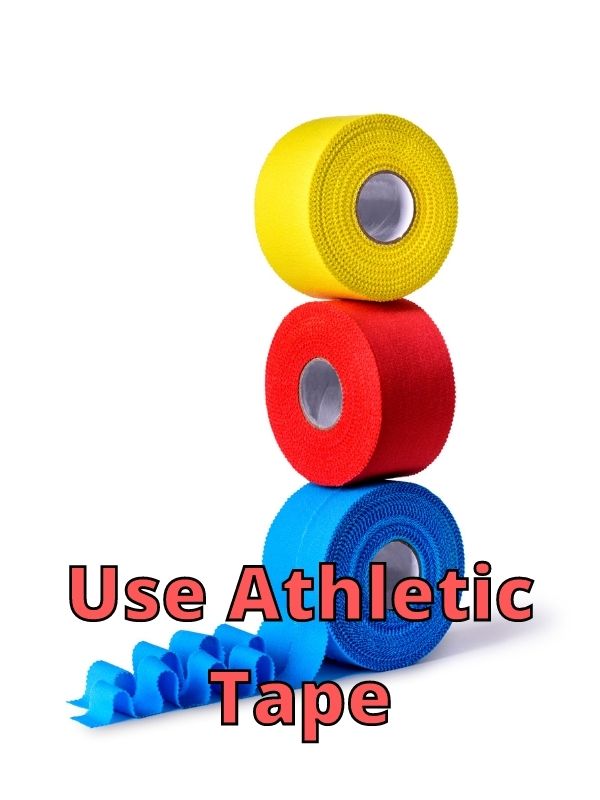
Even if you’ve taken the best care before and during your time on the trail, there’s still a chance that a blister may occur, and you’ll want to be prepared.
It’s a good idea to bring along some kind of blister treatment or care product, just to stop irritation when it occurs, and prevent any serious damage.
Athletic tape is a great solution. Just don’t apply it if the skin has already come off. Use a bandage or gauze, then-athletic tape. It can cover the irritated area and prevent any further skin damage, whilst also reducing irritation, so you can enjoy the rest of the trail in comfort.
Foot balm is another good product to use before you hike to prevent moisture from causing rubbing and to help skin stay protected.
6. Avoid Water
AD
As well as keeping your feet dry with the selection of footwear you choose, it’s also important to keep your feet dry when you’re out on the trail.
Waterproof shoes can come in handy when crossing shallow streams. If you are crossing deep streams on your hike it’s best to get shoes that dry off quickly rather than waterproof boots. Waterproof boots can take forever to dry, for deep streams use water shoes or trail runners.
Consider taking your shoes off every time you stop for a water or food break, just to let your feet breathe. Even things like cooling your feet in a lake, or drying them out with a towel, can make a difference when you carry on.
Some experienced hikers even do what’s called the “chimney effect”, where they roll the top of their socks over their boots, allowing more air to get to their feet, and help wick up the moisture.
Using just a few of these tricks can help ensure that your feet stay dry for longer.
7. Use Quality Insoles
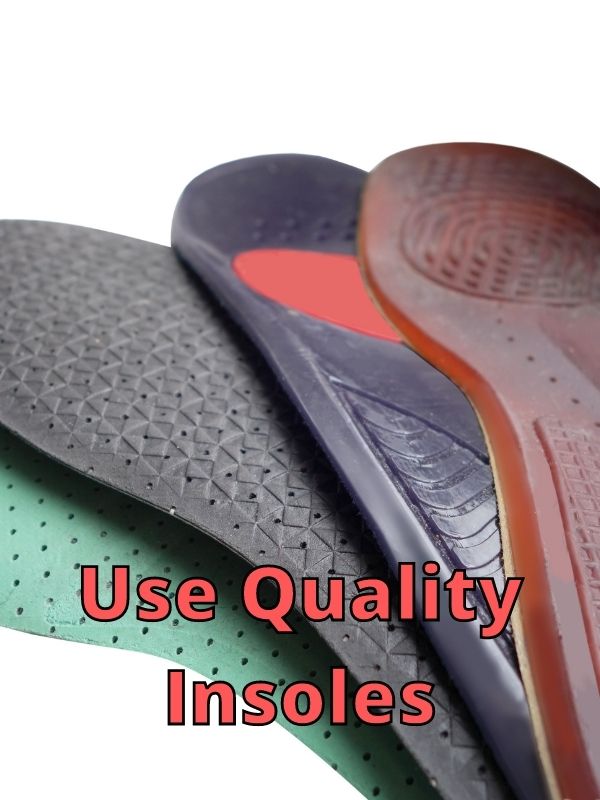
The standard insoles that come with most hiking boots – even expensive ones – are often far from ideal. Not only is it worth replacing these for extra comfort, but they can also prolong the life of your hiking boots, whilst also offering extra support.
Consider picking up a separate pair of insoles specific to your foot type. This can make a big difference to your hikes.
Sometimes the insole can help your foot stay more secure and prevent vent slipping. If you have boots that were working great but are not starting to bother you, consider getting new insoles as a solution.
8. Clean Out Your Boots
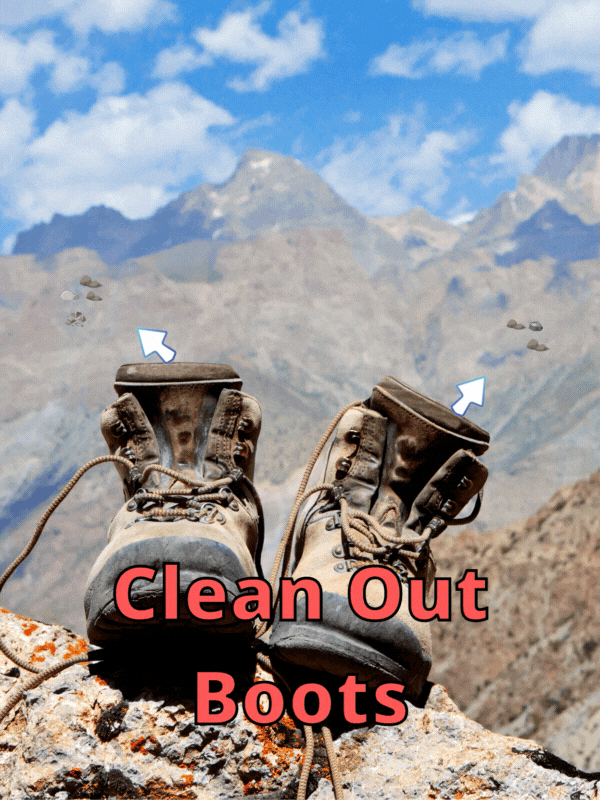
Even the tiniest rock, grit, or sand can make a big difference when on a long hike. Not only do they make you uncomfortable, but they cause minor irritations to your feet, which can result in rashes, cuts, and blisters.
Although it can be a pain, if you do feel the dirt in your socks or shoes, take them off and get rid of it. If you don’t do this promptly, you’re guaranteed to regret it later on.
You can find out how to prevent rocks and other debris from entering your shoes by reading this article.
How to Treat Hiking Blisters?
There’s no way to guarantee that you won’t end up with blisters on or after the trail. So even if you take a lot of care, it’s still good to know exactly how to treat them if they occur.
You can start by using a bandage. You can even put athletic tape over the bandage to keep it secure. If the blister is just starting and you have no bandage, foot balm can help.
If the bandage doesn’t seem to be helping and you feel the blister is getting bigger or may pop, then the blister may need to be popped. To do this, use a sterilized knife, needle, or pin, and insert this into the blister until it opens. Drain out the blister, and then clean the area and apply anti-bacterial cream.
Afterward, cover the affected area with a clean bandage and protect it from further irritation. During this entire time, your hands and the blister area need to be very clean and protected from infection. After your done, make sure to continue to check and clean the blister as needed.
What If I Pop My Blister?
If you can help it try not to. Popping your blister should be avoided as much as possible because it can cause more issues than if left alone. Once popped, the raw skin is exposed making it extremely tender, and often more painful.
However, there are some instances, depending on the blister’s size or location, where this can’t be avoided. Provided this is done safely and with properly sterilized equipment, this may be the best choice for you, as it will alleviate the pain and allow you to carry on.
Once it’s popped, just make sure to cover it up with a sterile dressing or bandage, and try to put as little stress as possible on the area, to prevent any further irritation or infection.
Final Thoughts
If you take the right precautions before hitting the trail, you’ll most likely be able to avoid getting blisters in unwanted areas. Wearing appropriate socks and shoes is the best way to avoid getting them.
But if one does arise, by taking the right steps, you can minimize the damage caused, and prevent it from causing you huge amounts of pain and discomfort. Regardless, the best way to deal with them is to not get them in the first place!

